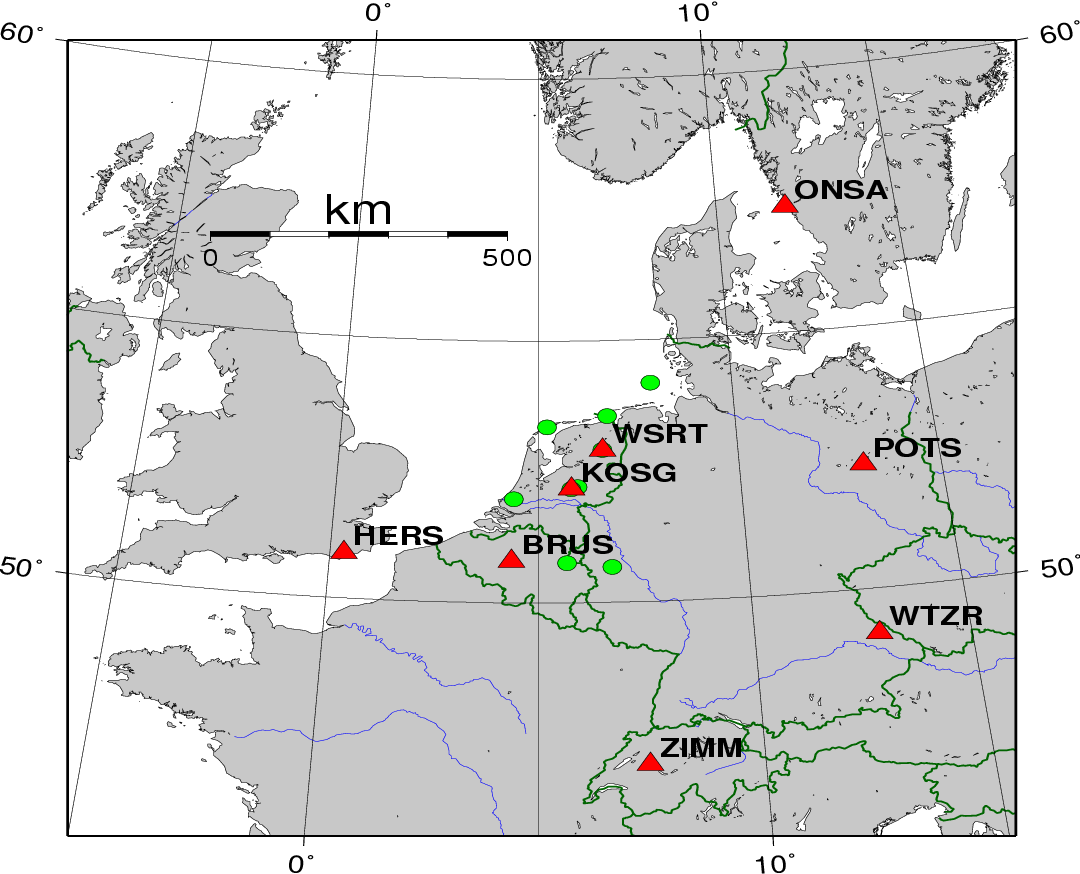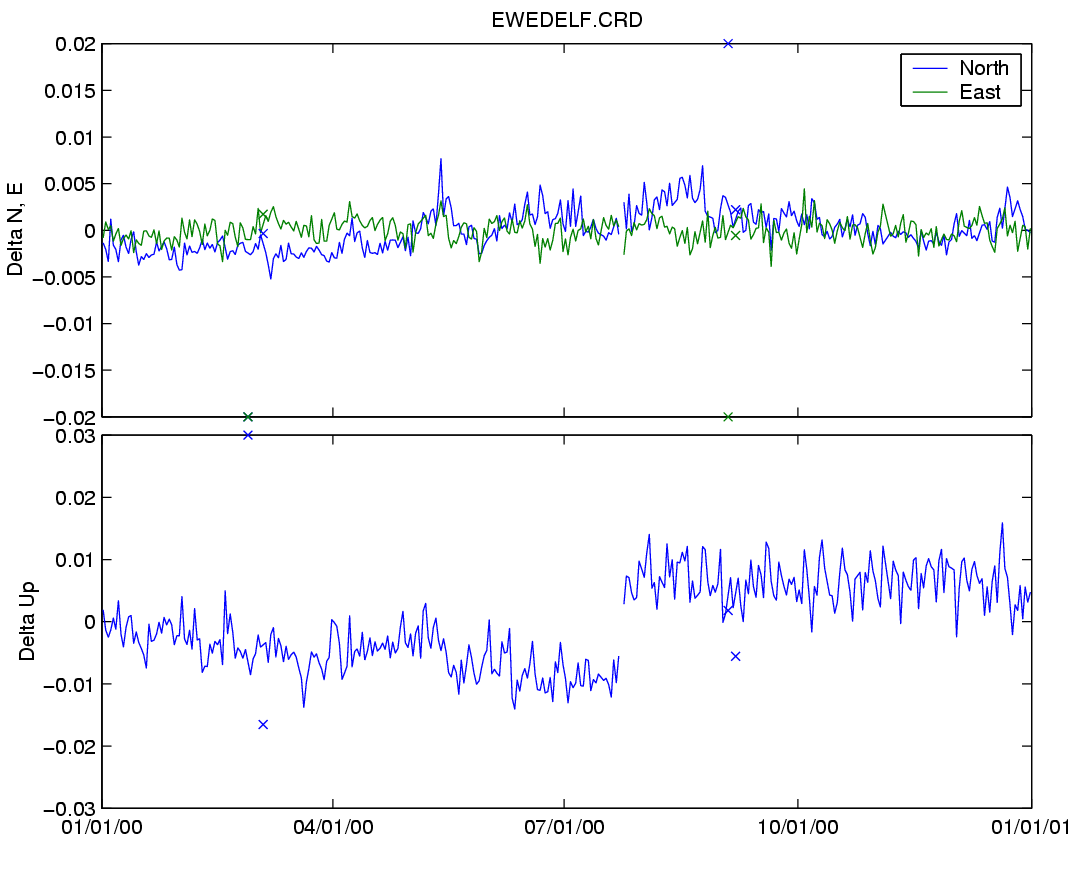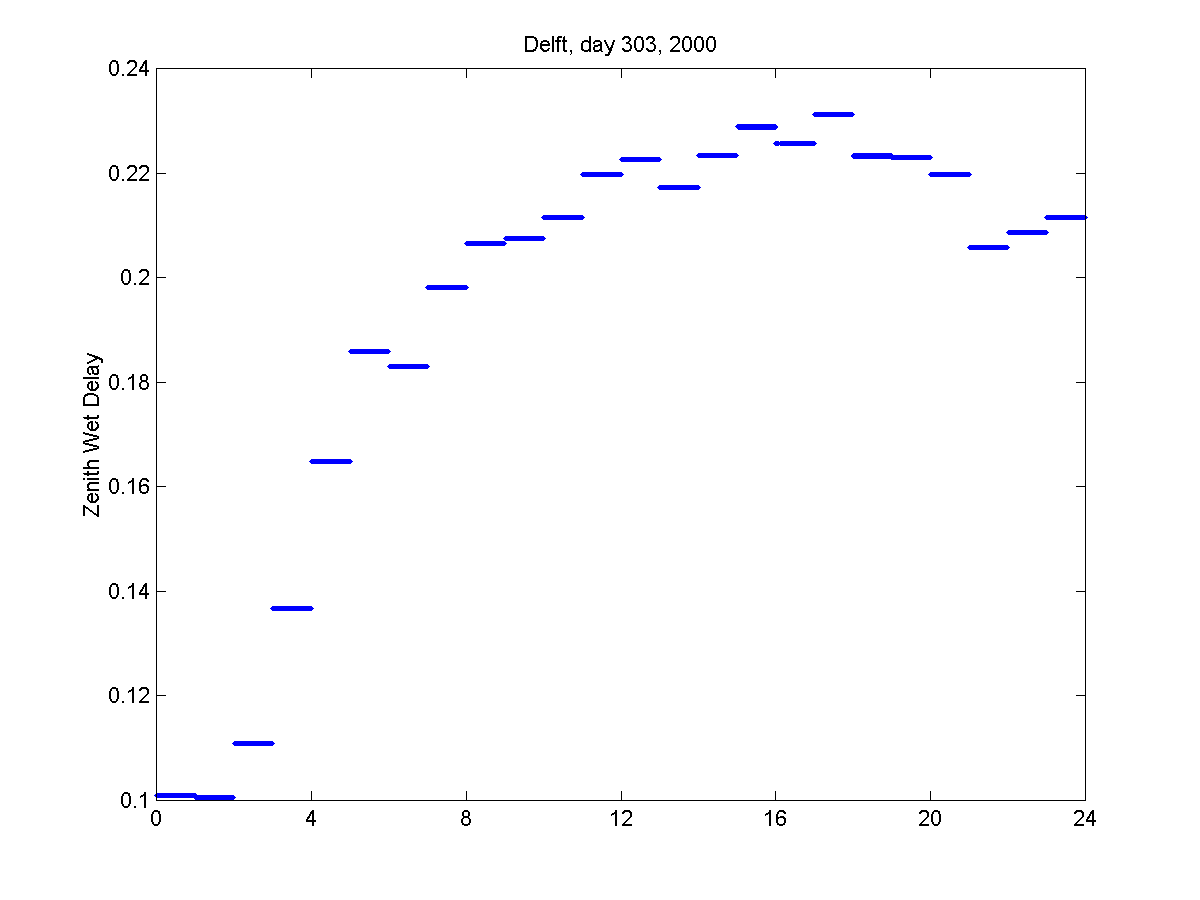
Full network

Detail of the network (stations with the open circles are not processed)
 Full network |
 Detail of the network (stations with the open circles are not processed) |
Data was processed for the full year of 2000. Three different periods were selected for analysis of the residuals, and to test the residual stacking. The third period, day 297-311, was selected as the main period for which slant delays were computed.
The results of the residual stacking, i.e. improved elevation dependent corrections, improved weighting functions and multipath corrections, have not yet been back-substituted into the analysis to improve the coordinate and ZTD timeseries. However, the multipath corrections were used in the computation of slant delays.
Results of residual stacking in approximately 1 x 1 degree bins over day 297 - 311 of 2000 (15 day period)
Download the results as encapsulated postscript files (eps)
Residuals have been stacked over three different periods in 2000. After the first period, there have been some changes in antenna with respect to the second and third, or main, period. This allows us to investigate the effect of antenna changes on the one hand, and sensitivity and repeatability of the residual stacking on the other hand.
The stacked residuals as function of elevation in 1 degree steps are show here
The change of antenna had a dramatic effect on the coordinate time series, as can be seen below for Delft, Eijsden and Terschelling. The reference system is ETRS89.
 Delft (DELF) |
 Eijsden (EIJS) |
 Terschelling (TERS) |
The reason for the artifical jumps in the height is the mismodelling of the elevation dependent phase delay due to the antenna and radome that are used. The size of the jumps was
| Delft | 10.7 mm |
| Eijsden | 17.5 mm |
| Terschelling | 13.3 mm |
The dataset with slant delays is given here. This is an protected area and you are requested to enter the same userid and password as used on the main tough site for the private area. See also the readme file.
The slant delay is computed from
SD = hmf(el) * ZHD_0(h) + wmf(el) * (ZWD) + SD_nonisotropic
= SDH + SWD + SD_nonisotropic
<---- isotropic slant delay ------->
with hmf(el) Niell's dry mapping function, wmf(el) Niell's wet
mapping function, ZHD_0(h) the a-priori zenith dry delay
(constant per station), from Saastamoinen, using a standard atmosphere
and the height of the station as only parameter (computed from the
XYZ coordinates), ZWD zenith wet delay from ZWD = ZTD - ZHD_0,
with ZTD estimated total zenith delay (Bernese: EW_00${doy}.TRP)
and the SD_noniostropic computed from the multipath corrected
residuals.
The Zenith delays are estimated once per hour, whereas the slant delays are given every 30 seconds. This causes problems in the present computation of the slant delays, as illustrated in the two plots below.
 Zenith Wet Delay (Delft, day 303) |
 Slant Total Delay, normalized by hydrostatic mf (Delft, day 303) |
To remedy this several options are open